Related Research Articles

The Royal Palace of Caserta is a former royal residence in Caserta, Campania, 35km north of Naples in southern Italy, constructed by the House of Bourbon-Two Sicilies as their main residence as kings of Naples. Located 35 km north of the historic center of Naples, Italy, the complex is the largest palace erected in Europe during the 18th century. In 1997, the palace was designated a UNESCO World Heritage Site; its nomination described it as "the swan song of the spectacular art of the Baroque, from which it adopted all the features needed to create the illusions of multidirectional space". The Royal Palace of Caserta is the largest former royal residence in the world, over 2 million m3 in volume and covering an area of 47,000 m2 and a floorspace of 138,000 square meters is distributed in the five stories of the building.

Museo di Capodimonte is an art museum located in the Palace of Capodimonte, a grand Bourbon palazzo in Naples, Italy designed by Giovanni Antonio Medrano. The museum is the prime repository of Neapolitan painting and decorative art, with several important works from other Italian schools of painting, and some important ancient Roman sculptures. It is one of the largest museums in Italy. The museum was inaugurated in 1957.
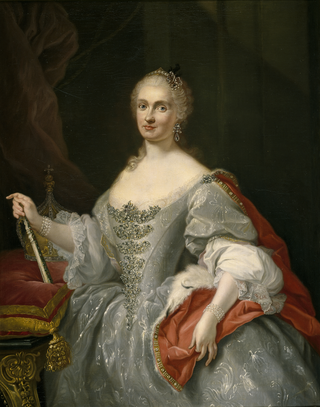
Maria Amalia was Queen of Spain from 10 August 1759 until her death in 1760 as the wife of King Charles III. Previously, she had been Queen of Naples and Sicily since marrying Charles on 19 June 1738. She was born a princess of Poland and Saxony, daughter of King Augustus III of Poland and Princess Maria Josepha of Austria. Maria Amalia and Charles had thirteen children, of whom seven survived into adulthood. A popular consort, Maria Amalia oversaw the construction of the Caserta Palace outside Naples as well as various other projects, and she is known for her influence upon the affairs of state.

Maria Isabella of Spain was Queen of the Two Sicilies from 4 January 1825 until 8 November 1830 as the wife of Francis I of the Two Sicilies.

The Royal Palace of Naples is a historic building located in Piazza del Plebiscito, in the historic center of Naples, Italy. Although the main entrance is located in this square, there are other accesses to the complex, which also includes the gardens and the Teatro di San Carlo, from the Piazza Trieste e Trento, Piazza del Municipio and Via Acton.
Giovanni Antonio de Medrano was the "Major Regius Praefectus Mathematicis Regni Neapolitani", chief engineer of the kingdom, architect, brigadier, and teacher of Charles III of Spain and his brothers the infantes. Giovanni was born in Sciacca in the Kingdom of Sicily. Giovanni Antonio de Medrano designed the Obelisk of Bitonto, the Palace of Capodimonte and the Teatro di San Carlo in Italy for Charles III of Spain. Medrano’s career is particularly studied, from his stay in Seville as a teacher for the royal princes, and his influence on Prince Charles’ architectural taste, to his projects in the Kingdom of Naples and the royal palace at Capodimonte.

Philip of Naples and Sicily, "Duke of Calabria", Infante of Spain was the eldest son and heir-apparent of Charles III of Spain, but was excluded from the succession to the thrones of Spain and Naples due to his intellectual disability. His younger brothers, Charles IV of Spain and Ferdinand I of the Two Sicilies replaced him in the succession. When his father became King of Spain in 1759, Philip remained in Naples where he lived until his death from smallpox at the age of 30.

Giuseppe Bonito was a Neapolitan painter of the Rococo period. Giuseppe Bonito is known for genre depictions on canvas. Many of Gaspare Traversi's paintings had previously been attributed to Bonito.

Capodimonte porcelain is porcelain created by the Capodimonte porcelain manufactory, which operated in Naples, Italy, between 1743 and 1759. Capodimonte is the most significant factory for early Italian porcelain, the Doccia porcelain of Florence being the other main Italian factory. Capodimonte is most famous for its moulded figurines.

Prince Charles of the Two Sicilies, Prince of Capua was the second son of Francis I of the Two Sicilies and his second wife, Maria Isabella of Spain. He contracted a morganatic marriage in 1836 and had to live for the rest of his life in exile.

The Royal Palace of Portici is a former royal palace in Portici, Southeast of Naples along the coast, in the region of Campania, Italy. Today it is the home of the Orto Botanico di Portici, a botanical garden operated by the University of Naples Federico II. These gardens were once part of the large royal estate that included an English garden, a zoo and formal parterres.

Charles III of Spain is the third surviving son of the first Bourbon King of Spain Philip V and Elisabeth Farnese. The descendants of Charles III of Spain, are numerous. Growing up in Madrid till he was 16, he was sent to the Italian Sovereign Duchy of Parma and Piacenza which, through his mother Elisabeth of Parma, was considered his birthright. Charles married only once, to the cultured Princess Maria Amalia of Saxony, with whom he had 13 children; 8 of these reached adulthood and only 4 of these had issue.
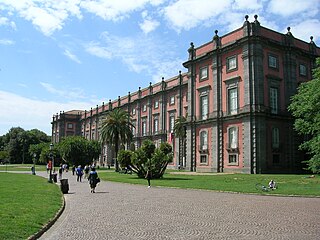
The Royal Palace of Capodimonte is a large palazzo in Naples, Italy. It was formerly the summer residence and hunting lodge of the Bourbon kings of the Two Sicilies, one of the two royal palaces in Naples. Today, the main building holds the main Neapolitan museum for paintings, and much other post-ancient art, in the National Museum of Capodimonte. This has the best collection of paintings from the distinct tradition of Neapolitan art, and also many works from the Farnese Collection.
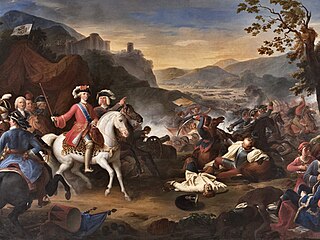
Camillo Guerra was an Italian painter of portraits and historical scenes.
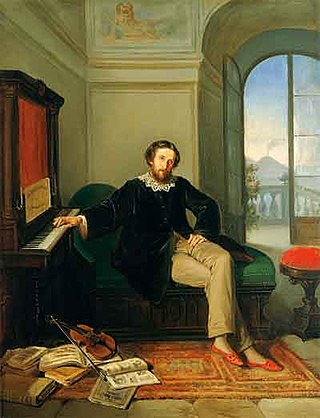
Vincenzo Pasquale Angelo Petrocelli was a Neapolitan artist. Petrocelli was born in Cervaro in the Kingdom of the Two Sicilies. He studied under Domenico Morelli, and was active as a painter from about 1850. He was principally a history painter, but also painted portraits and genre scenes. His sons Achille and Arturo were both painters.
Antonio Licata was an Italian painter, mainly of sacred subjects and portraits.

Gennaro Maldarelli was an Italian painter of the Neoclassic style.

The National Museum of Ceramics Duca Di Martina is a historical and artistic site situated inside of the Villa Floridiana Park in Naples, Italy. The building used to be one of Campania’s Bourbon royal residences and since 1927 this residence has hosted the museum.
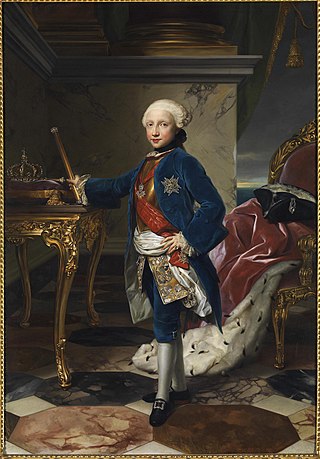
Portrait of Ferdinand IV is an 1759 painting by Anton Raphael Mengs, now in the National Museum of Capodimonte, in Naples.

Equestrian Portrait of Charles of Bourbon is a mid-18th century oil on canvas portrait of Charles of Bourbon, produced by Francesco Liani towards the end of Charles' rule in Naples before becoming Charles III of Spain. Liani also produced a portrait of Charles' wife, Maria Amalia of Saxony. Both works are now in Room 34 of the National Museum of Capodimonte.